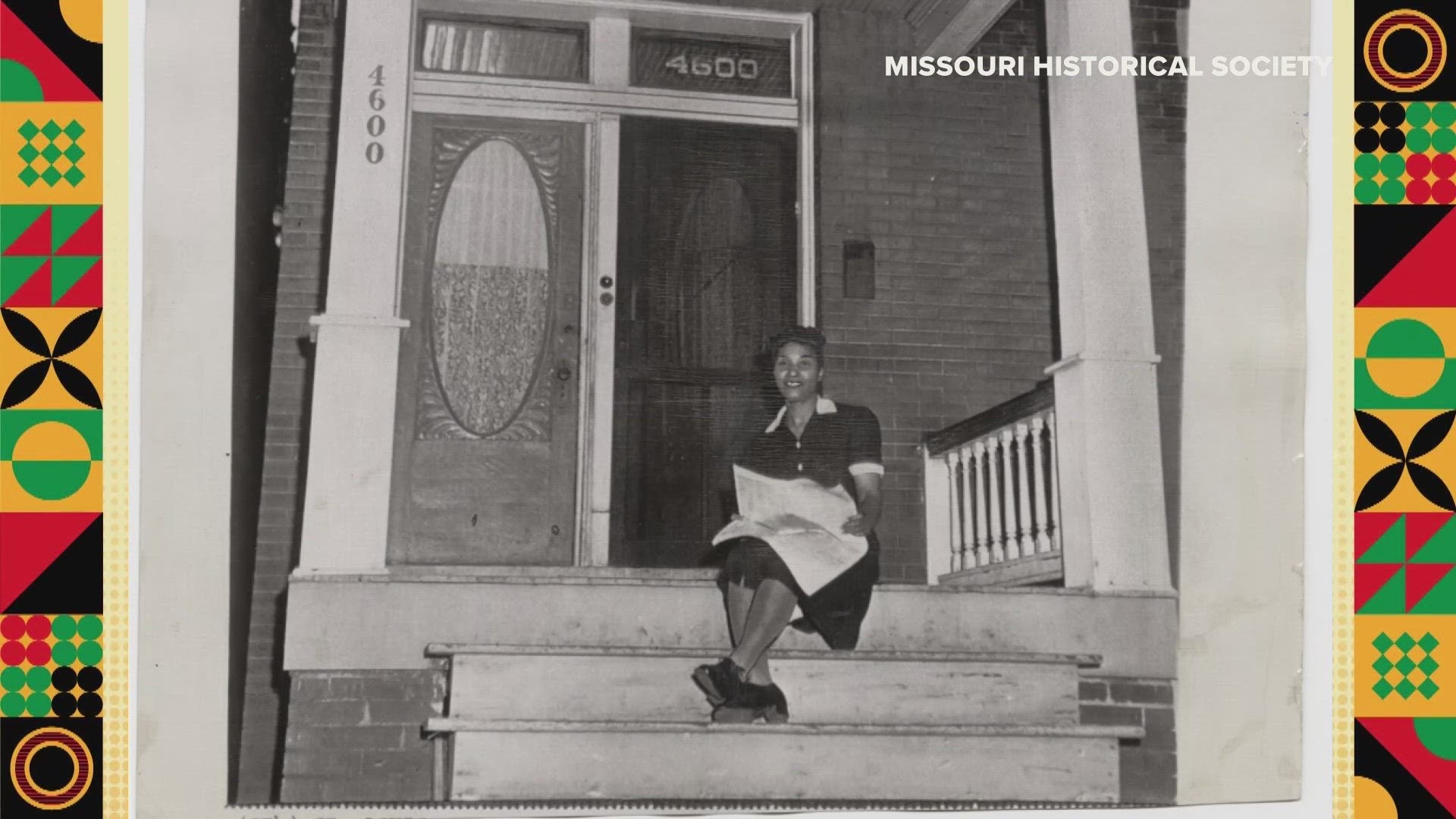ST. LOUIS — There's Black history on every corner of St. Louis, and one north city home became a battleground for a nationwide civil rights fight.
In what's now the Greater Ville neighborhood, there's a brick duplex that stands on Labadie Avenue.
Back in 1945, a Black family, the Shelleys, bought the home at 4600 Labadie Ave. after relocating from Mississippi. Not realizing that, in doing so, they set the stage for one of the most important Supreme Court cases of the 20th century.
RELATED: 'Both boundary and horizon': How Mary Meachum helped slaves cross the Mississippi River to freedom
Cicely Hunter, a public historian with the African History Initiative at the Missouri Historical Society, shared the history of this home.
"J.D. and Ethel Shelley moved to St. Louis from Mississippi and brought their six children with them," Hunter said.
Neighbors argued that the Shelleys needed to leave based on the neighborhood's racially restrictive covenant, blocking certain people from moving in. These covenants were common in St. Louis back in the 1940s. The covenants blocked Black people and other minorities from buying homes in certain neighborhoods.
The Shelleys didn't know the covenant existed when they purchased the home, and shortly after they moved in, the push began to move them out.
Their white neighbors, Louis and Fern Kraemer, filed a lawsuit against them in St. Louis Circuit Court.
"The Circuit Court actually ruled in favor of the Shelley family," Hunter said.
But, the Kraemers appealed to the Missouri Supreme Court, which ruled "in reverse of the circuit court ruling, in favor of the Kraemer family," Hunter said.
In 1948, the case made it to the U.S. Supreme Court, capturing the country's attention. Hunter said the case had high stakes for Americans of color, "with George Vaughn and Thurgood Marshall, the NAACP-- who are heavy hitters at that time and who are all advocating on behalf of black people across the country."
Then, a groundbreaking ruling came: "Racially restrictive covenants should not be enforced. It was unconstitutional … based on the 14th Amendment," Hunter said, breaking down the ruling.
Because of this ruling, other people of color were able to argue against the enforcement of racially restrictive covenants in the years to follow, citing the 14th Amendment’s Equal Protection Clause.
Many others in St. Louis were battling the same problem at the time. Hunter said that in her research she found there were 373 racially restrictive covenants in place at that time."
The effects of these covenants still linger.
"You have communities that have been disinvested," Hunter said. "You have communities where there was 'white flight.'"
But changemakers from America's dark past, such as the Shelley family, help the country march toward a brighter future, one step at a time.
"The grounds on which we walk are the grounds on which battles were waged through the civil rights movement and have such significant impact … in some ways, we don't even recognize … living in St. Louis, just how important these stories are to the legacy of this place that we call home," Hunter said.
The Missouri Historical Society is on a mission to show civil rights battles weren't just fought in the South. St. Louis' own civil rights "soldiers" have been waging war against racial discrimination for decades.
Hunter said, "When we talk about the lunch counter sit-ins that were happening, we usually talk about Greensboro. But, they were happening in St. Louis just over a decade before. You have stories like Percy Green, who's scaling the Arch. You have all these incredible people resisting the system at play.”
To watch 5 On Your Side broadcasts or reports 24/7, 5 On Your Side is always streaming on 5+. Download for free on Roku, Amazon Fire TV or the Apple TV App Store.

